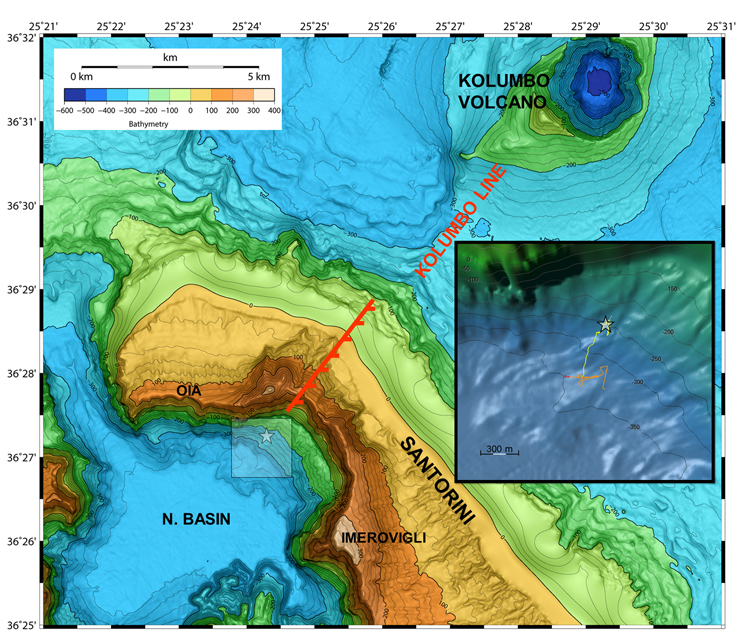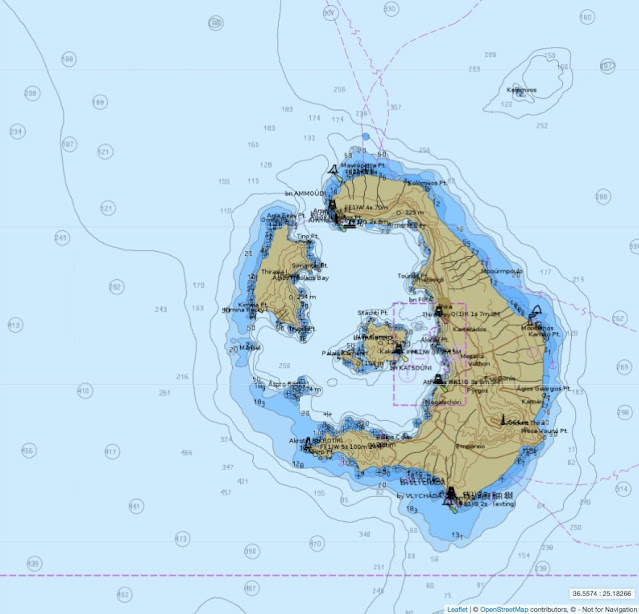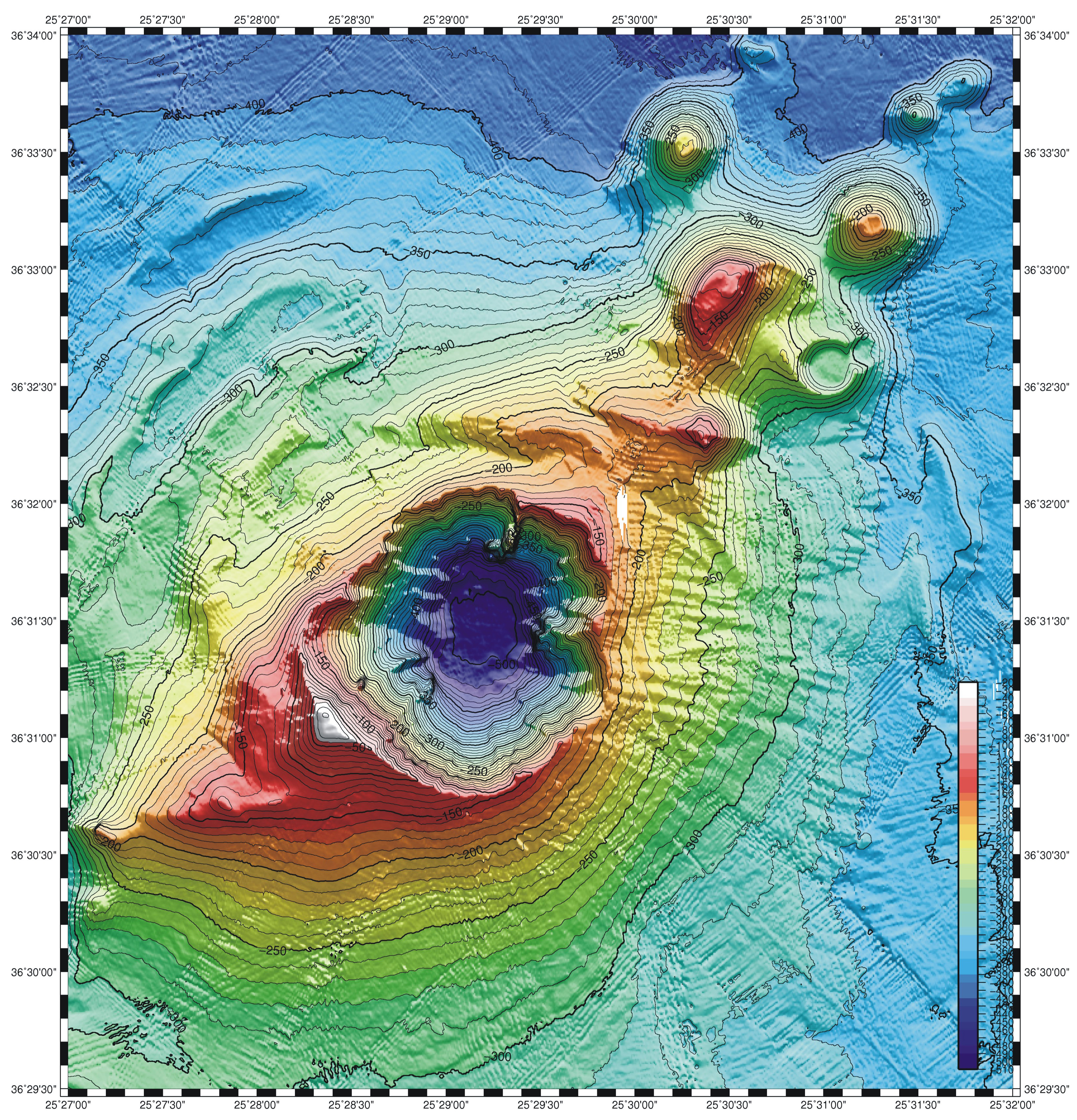Migrating whales travel across "superhighways" every year, facing threats like overfishing and ship strikes.
Crossing various countries and stretches of international waters, their journeys know no boundaries.
Neither should our approach to protecting them!
courtsy of Lewis Pugh Foundation @LewisPughFDN
courtsy of Lewis Pugh Foundation @LewisPughFDN
From DailyMail by Shivali Best
The map was created by WWF, and shows the ocean 'superhighways' whales use to travel around the globe
Sadly, the map highlights the increasing threats facing whales in the blue corridors they use to migrate
The most significant threat is entanglement in fishing gear and 'ghost nets', according to WWF
WWF is now calling for action by countries to safeguard the marine mammals along their superhighways
Scientists have combined satellite tracking data from 845 whales to create the world's first whale migration map.
The map was created by conservation charity WWF, and shows the ocean 'superhighways' whales use to travel around the globe.
It highlights the increasing threats facing the world's whales in their key habitats and the blue corridors they use to migrate.
WWF is now calling for action by countries to safeguard the marine mammals along their superhighways.
Chris Johnson, who leads the WWF protecting whales and dolphins initiative, said: 'Cumulative impacts from human activities – including industrial fishing, ship strikes, chemical, plastic and noise pollution, habitat loss and climate change – are creating a hazardous and sometimes fatal obstacle course.'
Whales play key roles in maintaining the health of the oceans and fish populations, as well as carbon storage, but six of the 13 great whale species are endangered or vulnerable to extinction despite decades of protection from whaling.
A report by WWF and marine scientists, including from the University of Southampton, Oregon State University and University of California Santa Cruz, details whale migrations and the threats they face along the way.
It draws on satellite tracking data from 845 whales collected over the past 30 years to map how species, including humpbacks, fin and blue whales, travel through oceans from breeding to key feeding grounds.
It highlights the growing dangers they face from human activity, both in their critical habitats and during migration along coasts and across oceans such as the Pacific, Indian and Atlantic, including into UK waters.
The most significant threat to whale and dolphin populations is entanglement in fishing gear and 'ghost nets' which are discarded, lost or abandoned by fishermen, which kills an estimated 300,000 whales a year, the report said.
They also face overfishing which limits their food supplies, increasing ship traffic which raises the risk of being hit by vessels, underwater noise, plastic and chemical pollution and offshore oil and gas drilling.
A handful of countries still hunt whales commercially, and the mammals are also at risk from climate change, which is affecting their prey and migration times and reducing important habitats such as sea ice.
WWF is calling for the international community to work together to deliver comprehensive marine protected areas (MPAs) that overlap national and international 'blue corridors'.
The charity wants to see ships moved away from critical whale habitat and measures to reduce underwater noise and vessel strikes, efforts to eliminate and clean up ghost gear and reduce plastic pollution, and work to end whales being caught as 'bycatch' in fisheries.
Sadly, the map highlights the increasing threats facing whales in the blue corridors they use to migrate
The most significant threat is entanglement in fishing gear and 'ghost nets', according to WWF
WWF is now calling for action by countries to safeguard the marine mammals along their superhighways
Scientists have combined satellite tracking data from 845 whales to create the world's first whale migration map.
The map was created by conservation charity WWF, and shows the ocean 'superhighways' whales use to travel around the globe.
It highlights the increasing threats facing the world's whales in their key habitats and the blue corridors they use to migrate.
WWF is now calling for action by countries to safeguard the marine mammals along their superhighways.
Chris Johnson, who leads the WWF protecting whales and dolphins initiative, said: 'Cumulative impacts from human activities – including industrial fishing, ship strikes, chemical, plastic and noise pollution, habitat loss and climate change – are creating a hazardous and sometimes fatal obstacle course.'
Whales play key roles in maintaining the health of the oceans and fish populations, as well as carbon storage, but six of the 13 great whale species are endangered or vulnerable to extinction despite decades of protection from whaling.
A report by WWF and marine scientists, including from the University of Southampton, Oregon State University and University of California Santa Cruz, details whale migrations and the threats they face along the way.
It draws on satellite tracking data from 845 whales collected over the past 30 years to map how species, including humpbacks, fin and blue whales, travel through oceans from breeding to key feeding grounds.
It highlights the growing dangers they face from human activity, both in their critical habitats and during migration along coasts and across oceans such as the Pacific, Indian and Atlantic, including into UK waters.
The most significant threat to whale and dolphin populations is entanglement in fishing gear and 'ghost nets' which are discarded, lost or abandoned by fishermen, which kills an estimated 300,000 whales a year, the report said.
They also face overfishing which limits their food supplies, increasing ship traffic which raises the risk of being hit by vessels, underwater noise, plastic and chemical pollution and offshore oil and gas drilling.
A handful of countries still hunt whales commercially, and the mammals are also at risk from climate change, which is affecting their prey and migration times and reducing important habitats such as sea ice.
WWF is calling for the international community to work together to deliver comprehensive marine protected areas (MPAs) that overlap national and international 'blue corridors'.
The charity wants to see ships moved away from critical whale habitat and measures to reduce underwater noise and vessel strikes, efforts to eliminate and clean up ghost gear and reduce plastic pollution, and work to end whales being caught as 'bycatch' in fisheries.
It says delivering protected blue corridors will help more than whales, who store significant amounts of carbon over their lifetime and whose waste fertilises the ocean, helping maintain populations of other species including commercial fish.
The report points to an assessment from the International Monetary Fund which estimates the intrinsic value of each great whale is more than $2 million (£1.5 million), making the global population worth more than a trillion US dollars (£740 billion).
The global whale-watching industry alone is valued at more than $2 billion (£1.5 billion) annually, the report said.
Dr Simon Walmsley, chief marine adviser at WWF UK, said: 'Gentle giants like fin and humpback whales can be frequent visitors to UK seas, but – as is the case right around the world – our waters are fraught with risk, from fishing gear entanglement to ship strikes to impacts from noise pollution.
The report points to an assessment from the International Monetary Fund which estimates the intrinsic value of each great whale is more than $2 million (£1.5 million), making the global population worth more than a trillion US dollars (£740 billion).
The global whale-watching industry alone is valued at more than $2 billion (£1.5 billion) annually, the report said.
Dr Simon Walmsley, chief marine adviser at WWF UK, said: 'Gentle giants like fin and humpback whales can be frequent visitors to UK seas, but – as is the case right around the world – our waters are fraught with risk, from fishing gear entanglement to ship strikes to impacts from noise pollution.
Spatial and Seasonal Distribution of American Whaling and Whales in the Age of Sail
All observations of sperm, right, bowhead, gray, and humpback whales.
Daily locations of vessels were extracted from a sample of American whaling logbooks for voyages departing between 1780 and 1920.
Days with no whale observations and days with observations of sperm, right, bowhead, humpback, and gray whales and locations of key ports were distinguished by the colors indicated.
Whalemen from other countries caught whales in many of the same areas and in some areas where American whalemen did not go
Links :
- Argos : Identifying whale migration routes in the global oceans
- Sydney Morning Herald : We thought we’d saved the whales. Were we wrong?
- World Shipping Council : WSC Whale chart : a global navigational aid to protect whales
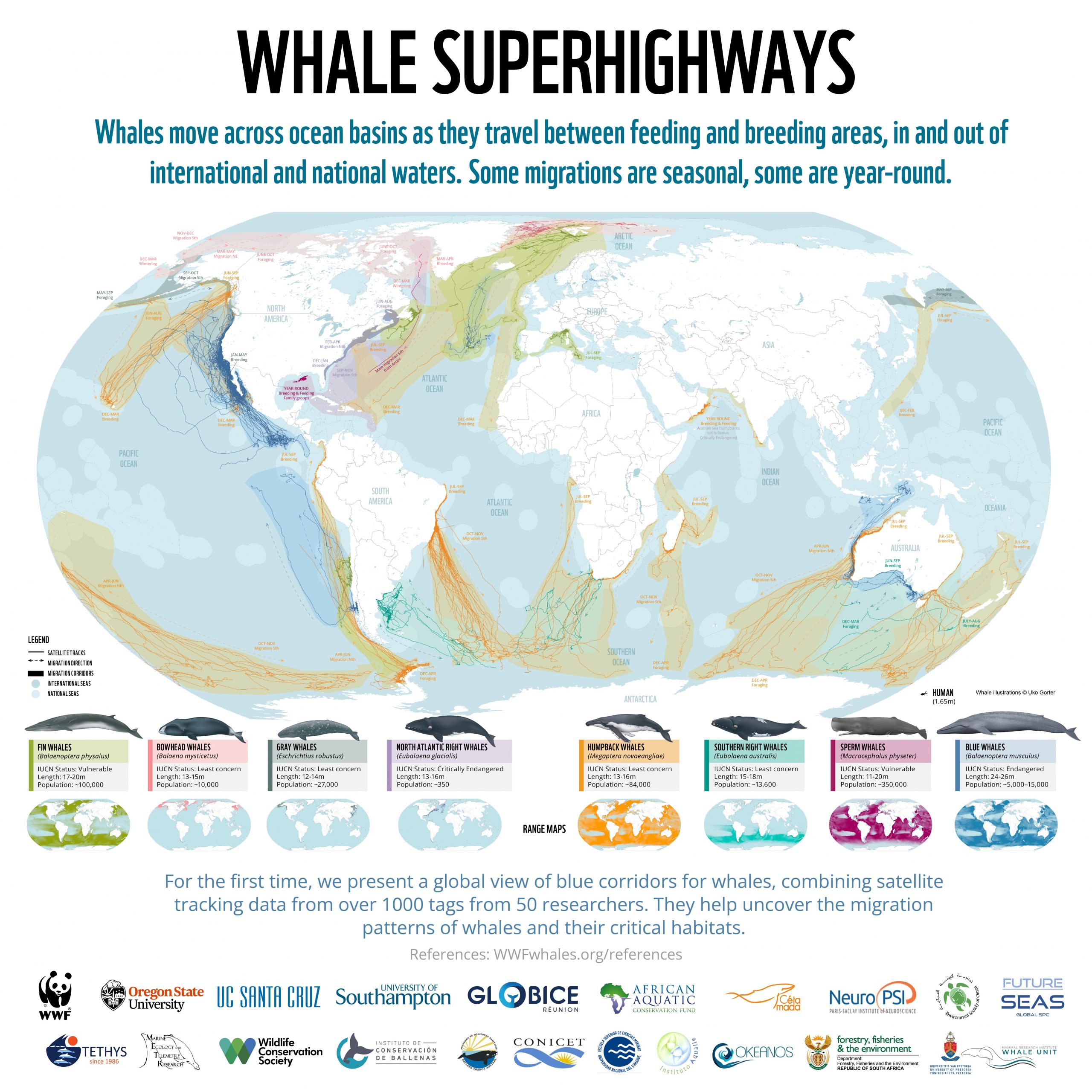

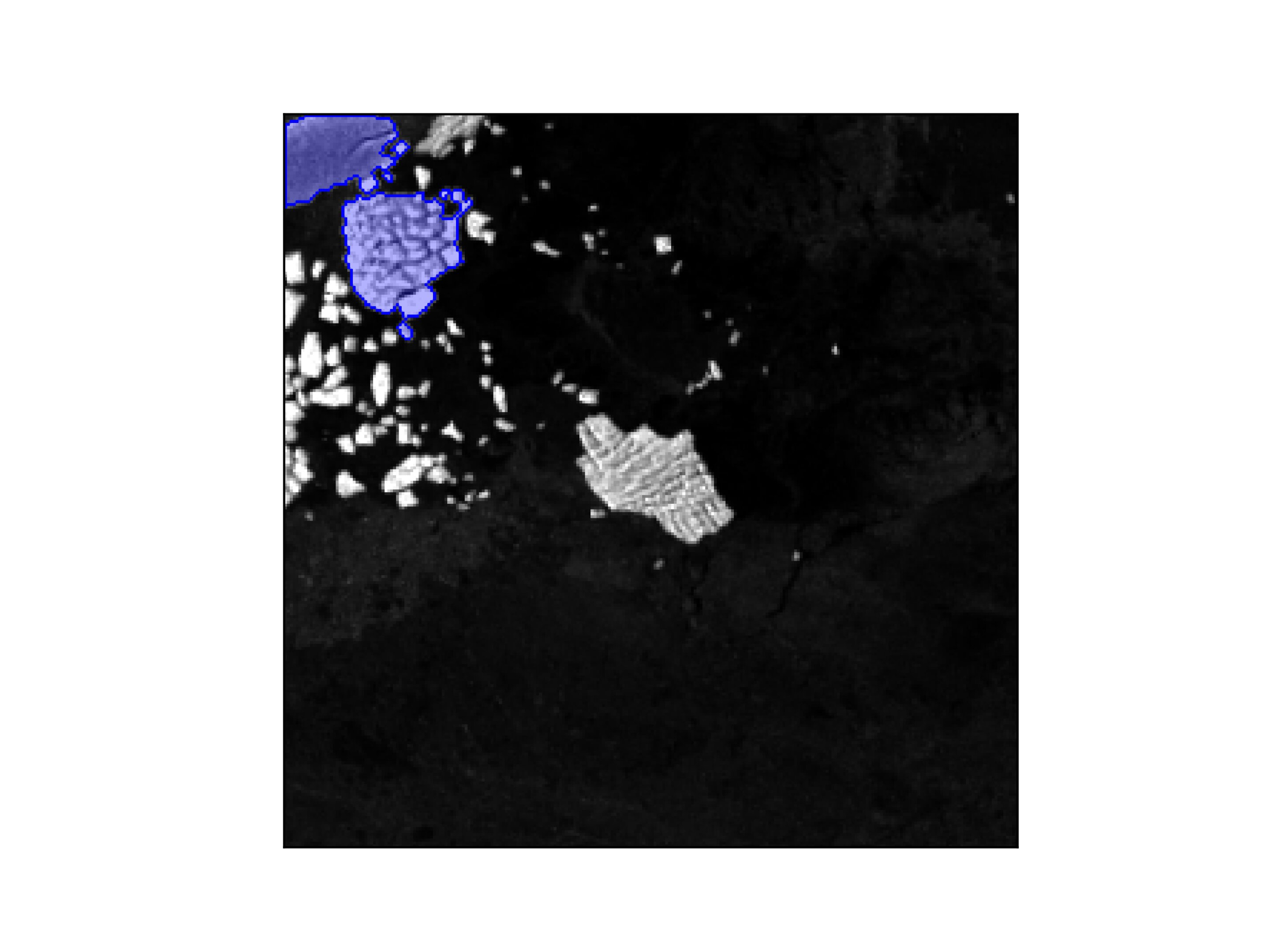
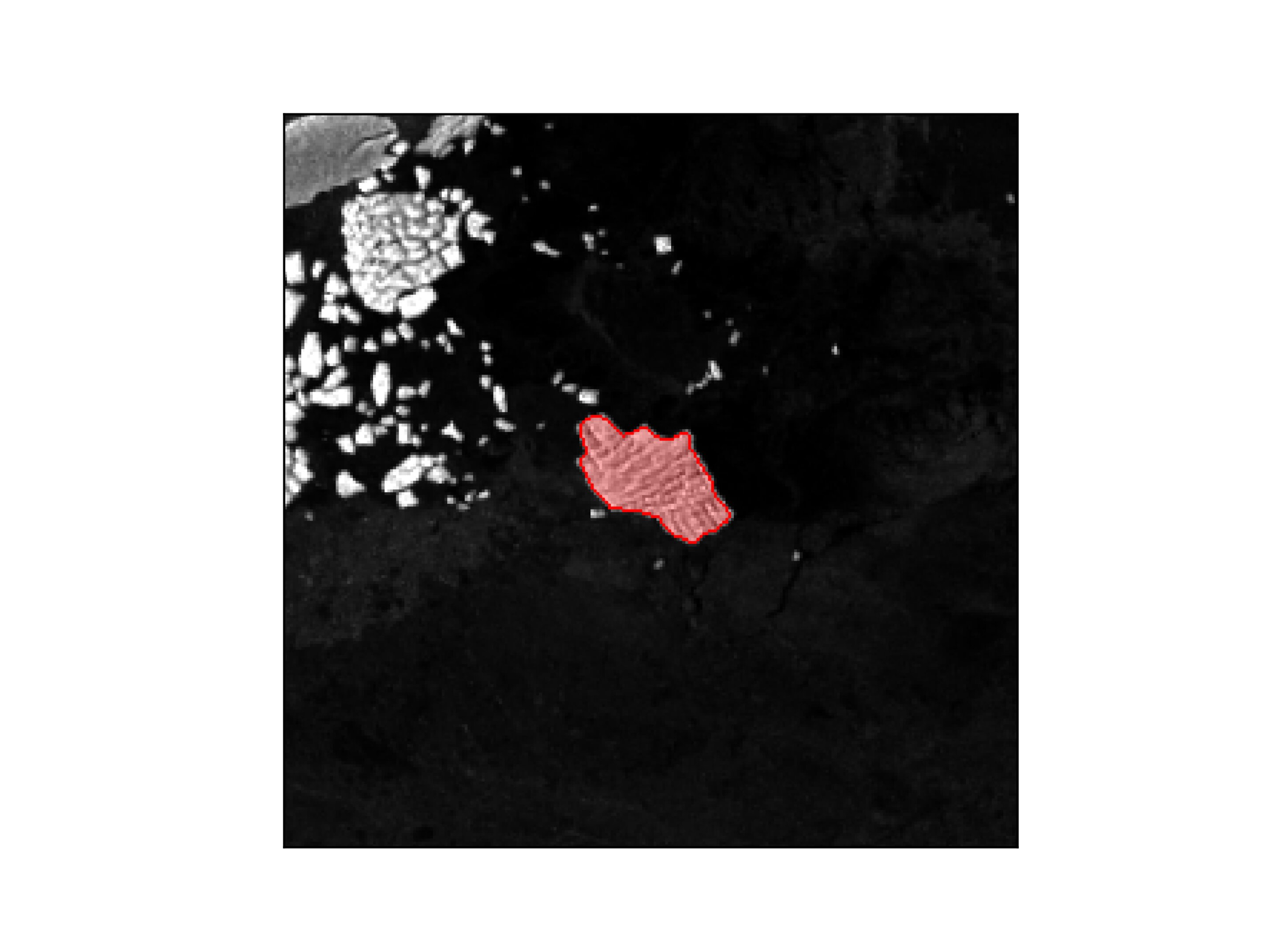
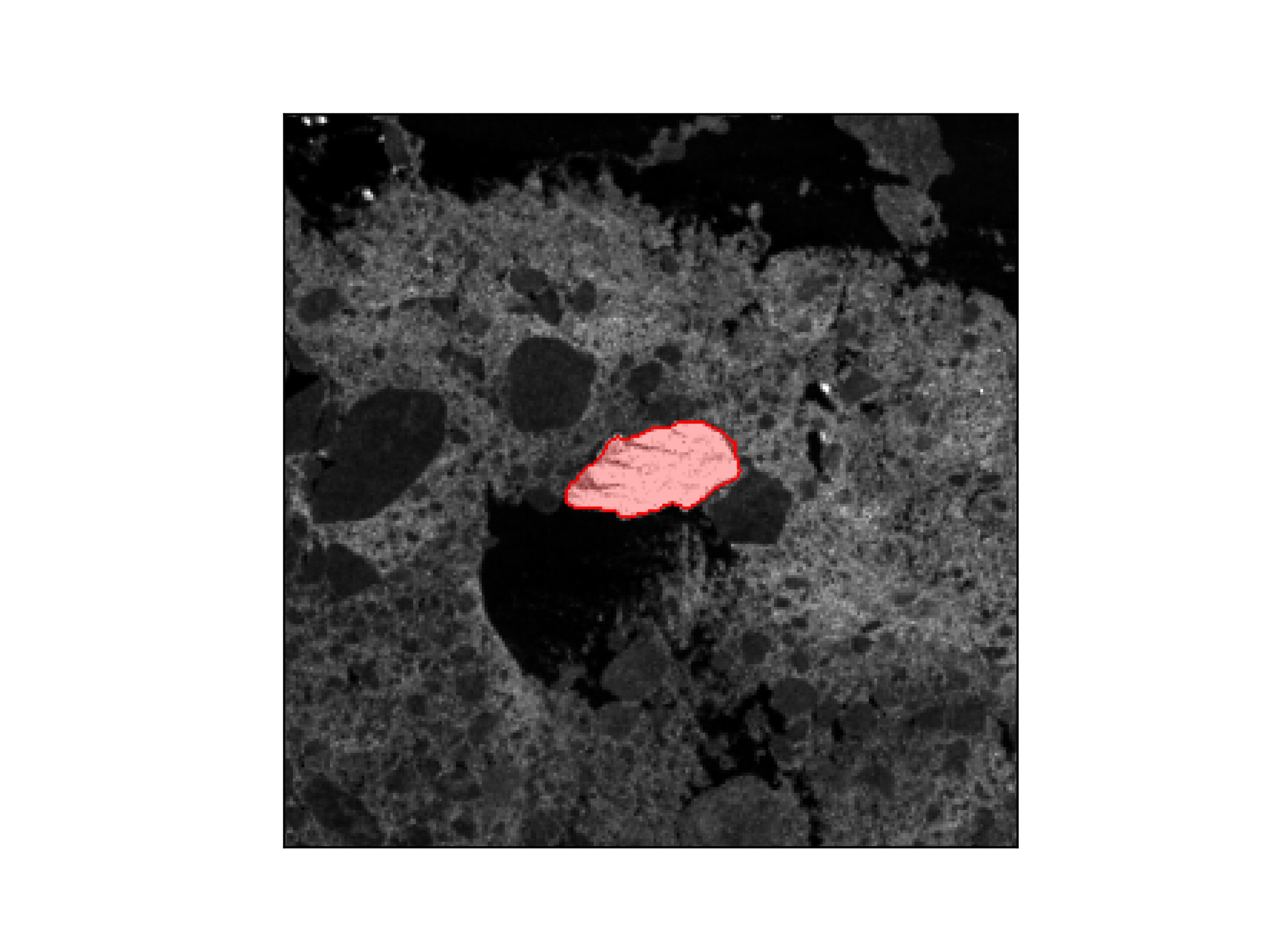
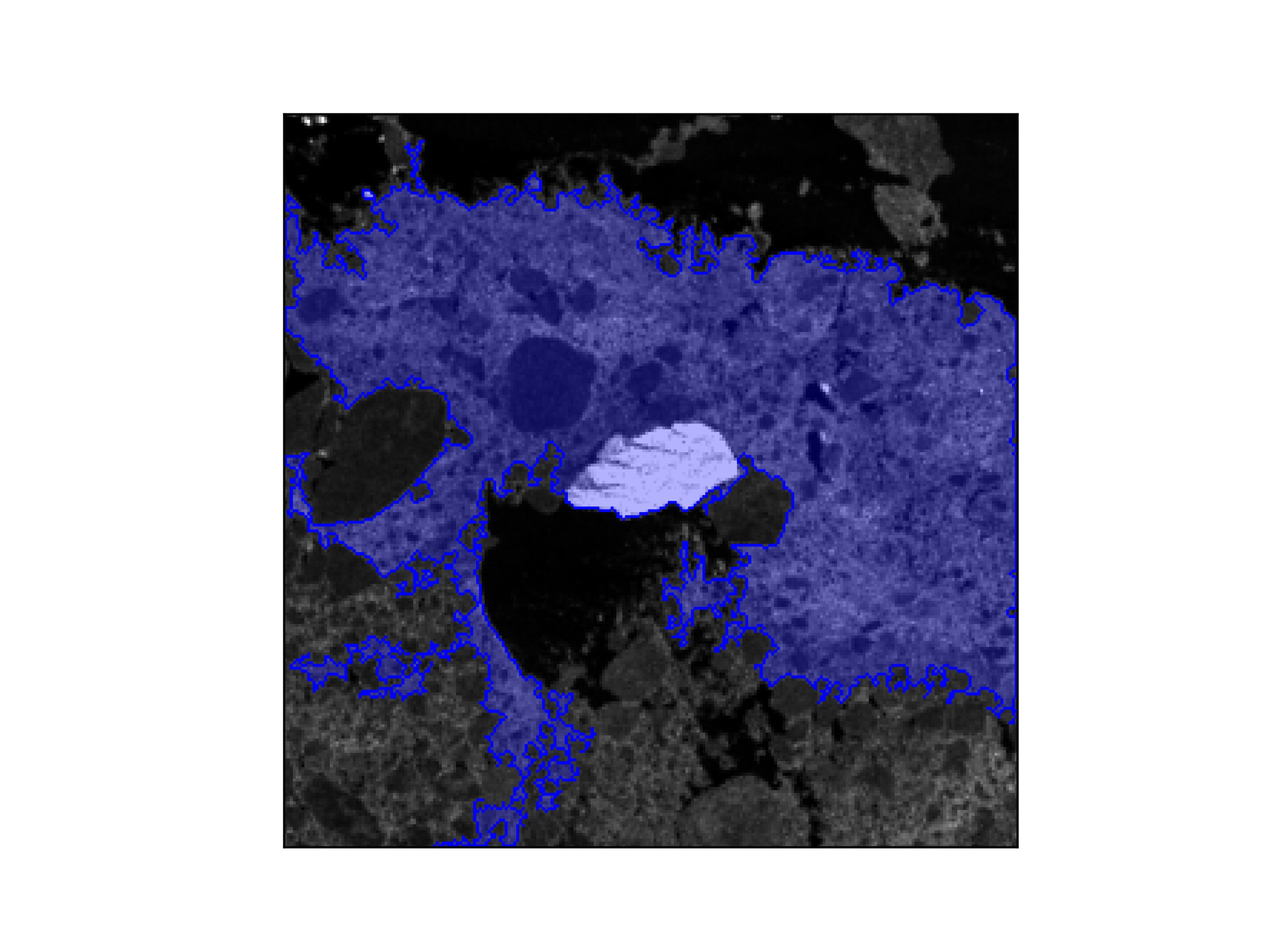
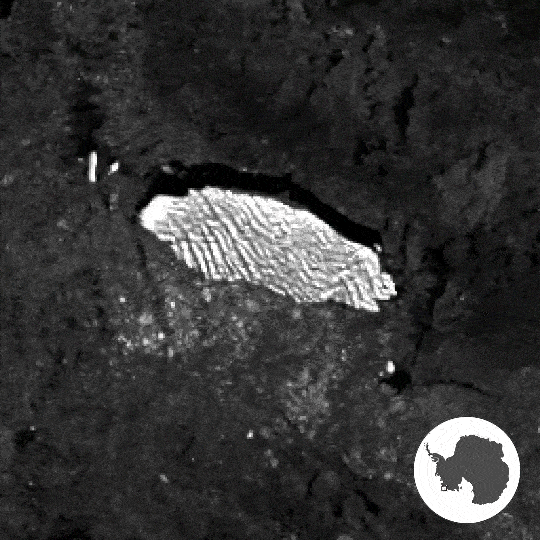

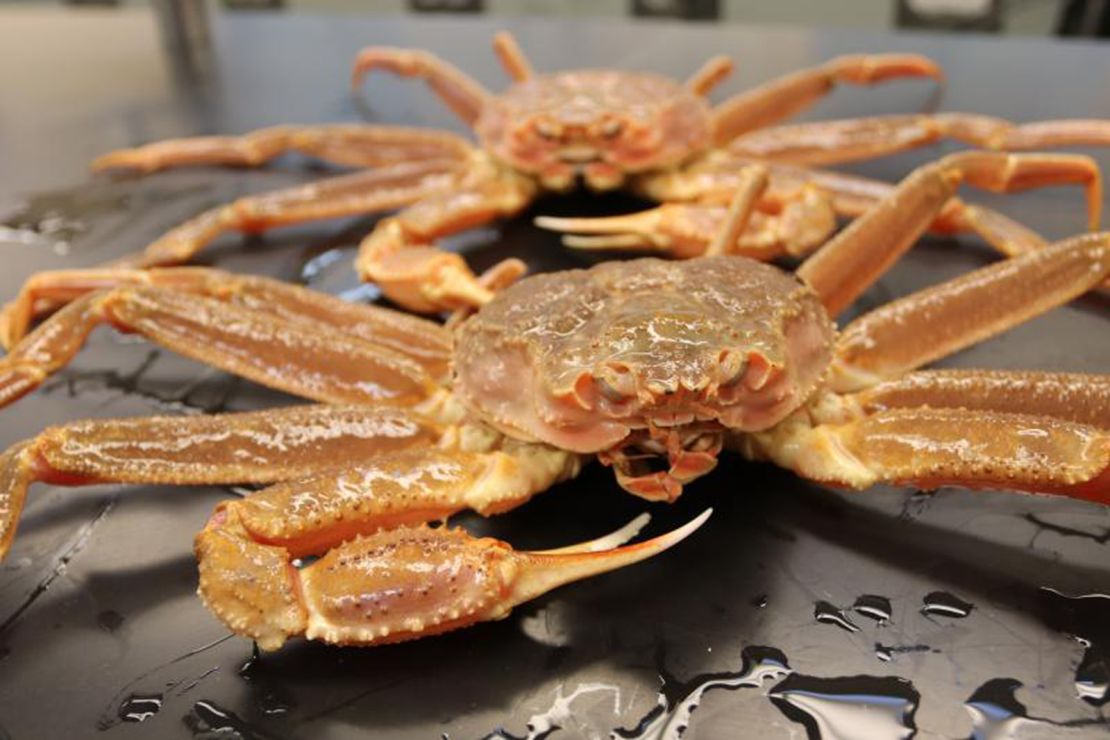
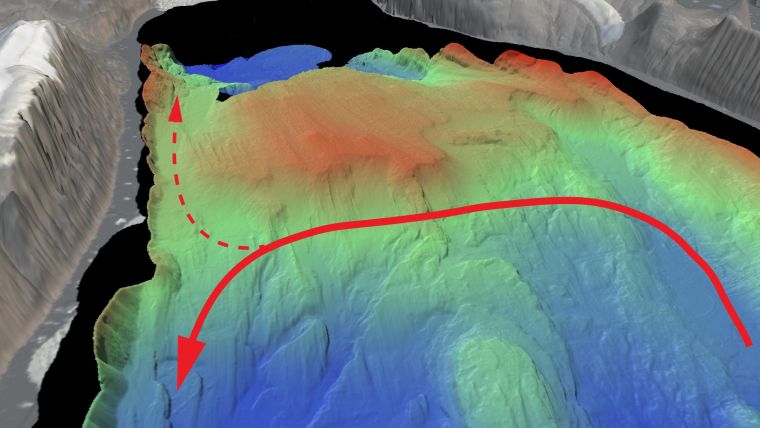
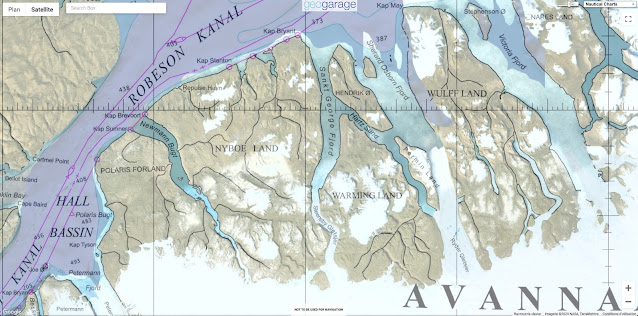
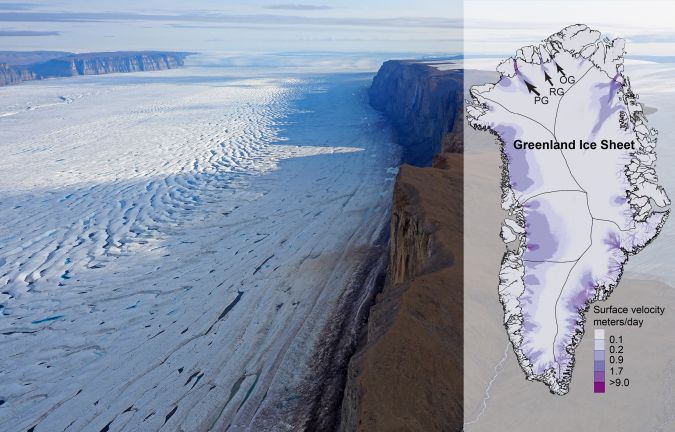 Figure 1: Photo showing the ice tongue of Ryder Glacier in northern Greenland.
Figure 1: Photo showing the ice tongue of Ryder Glacier in northern Greenland.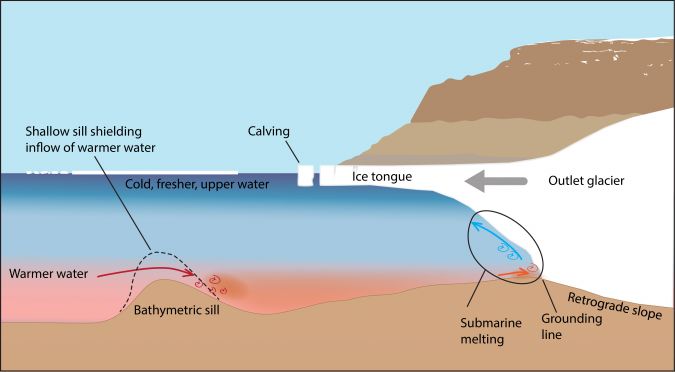 Figure 2: Schematic illustration of a marine outlet glacier with a floating ice tongue being subjected to submarine melting from inflow of subsurface warmer water.
Figure 2: Schematic illustration of a marine outlet glacier with a floating ice tongue being subjected to submarine melting from inflow of subsurface warmer water.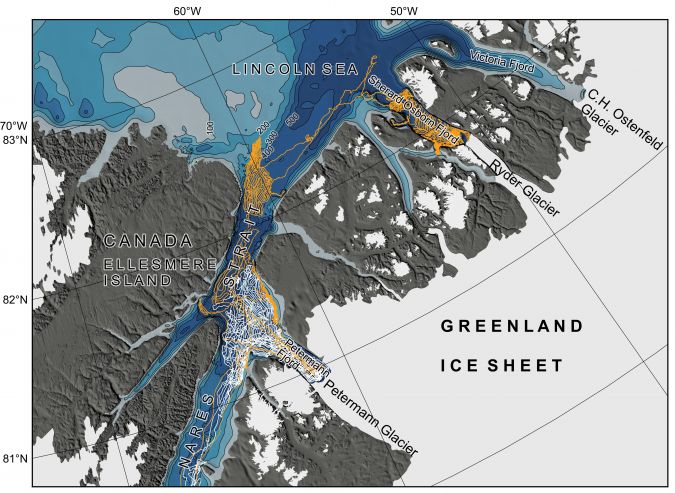 Figure 3: Northern Greenland featuring its three largest fjords, each hosting a marine outlet glacier that drains the northern sector of the Greenland Ice Sheet.
Figure 3: Northern Greenland featuring its three largest fjords, each hosting a marine outlet glacier that drains the northern sector of the Greenland Ice Sheet.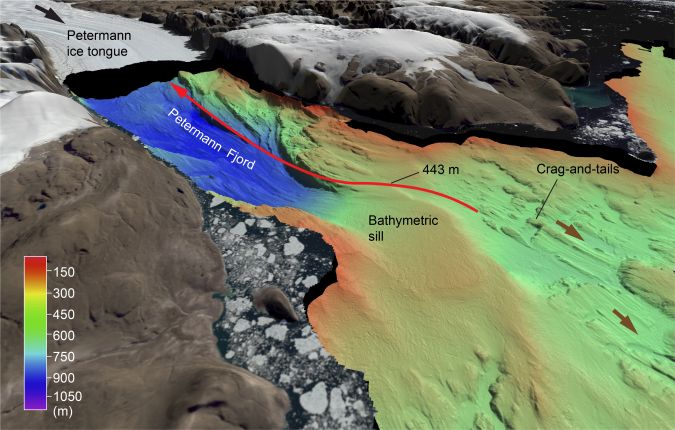 Figure 4: Multibeam bathymetry of Petermann Fjord and the adjacent area of Nares Strait acquired during the Petermann 2015 expedition with the Swedish icebreaker Oden (Multibeam: Kongsberg EM 122, 1°x1°, 12kHz).
Figure 4: Multibeam bathymetry of Petermann Fjord and the adjacent area of Nares Strait acquired during the Petermann 2015 expedition with the Swedish icebreaker Oden (Multibeam: Kongsberg EM 122, 1°x1°, 12kHz).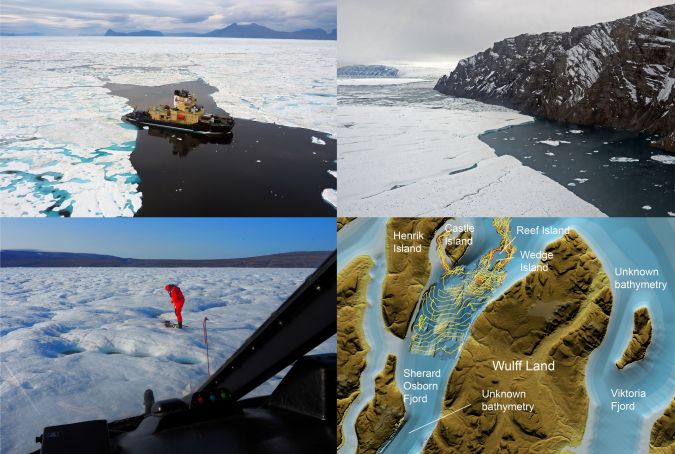 Figure 5: (Upper left) Icebreaker Oden in the area outside Sherard Osborn Fjord.
Figure 5: (Upper left) Icebreaker Oden in the area outside Sherard Osborn Fjord.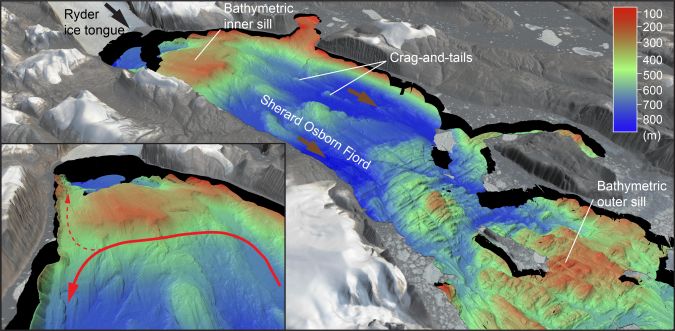 Figure 6: Multibeam bathymetry of Sherard Osborn Fjord acquired during the Ryder 2019 expedition with the Swedish icebreaker Oden.
Figure 6: Multibeam bathymetry of Sherard Osborn Fjord acquired during the Ryder 2019 expedition with the Swedish icebreaker Oden.









